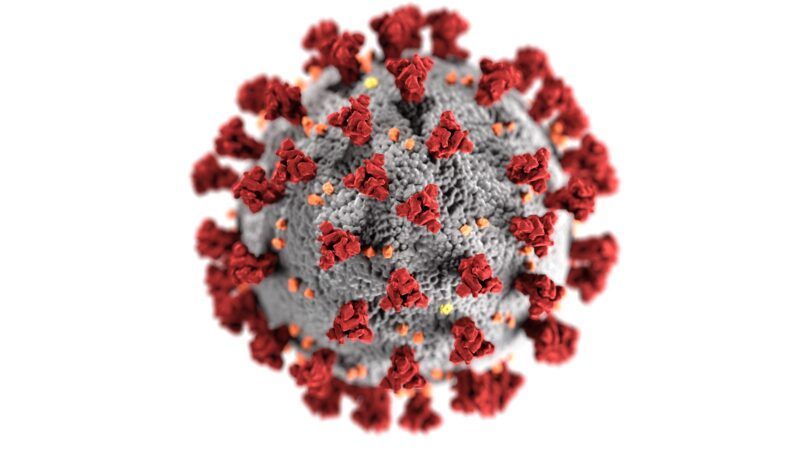New CDC Estimates Suggest COVID-19 Is Deadlier Than the Agency Previously Thought
The increase in the estimated infection fatality rate is especially large for the oldest age group.

The latest estimates from the Centers for Disease Control and Prevention (CDC) suggest COVID-19 is deadlier than the CDC previously thought, especially among older Americans. According to the "best estimate" in the most recent version of the CDC's COVID-19 Pandemic Planning Scenarios, 9 percent of people 65 or older who are infected by the COVID-19 virus die from the disease. The estimated infection fatality rates (IFRs) for other age groups are much lower but still generally higher than the numbers the CDC was using prior to March 19.
The estimated IFR is 0.002 percent for people 17 or younger, 0.05 percent for 18-to-49-year-olds, and 0.6 percent for 50-to-64-year-olds. The CDC's prior estimates used somewhat different age groups, which makes direct comparisons tricky. But the estimated IFR for the oldest age group has risen dramatically, from 5.4 percent for 70+ to 9 percent for 65+.
The new estimates are also higher for the second-oldest group (0.6 percent for 50-to-64-year-olds now vs. 0.5 percent for 50-to-69-year-olds previously) and the second-youngest group (0.05 percent for 18-to-49-year-olds vs. 0.02 percent for 20-to-49-year-olds). The new estimate for the youngest age group is lower (0.002 percent for 17 or younger vs. 0.003 percent for 19 or younger), but that may reflect the lower cutoff.
The CDC's earlier estimates were based on a July 2020 PLOS Medicine study that used data from Hubei, China, and six regions of Europe. The Chinese numbers were reported in January and February 2020, while the European numbers were reported in March and April 2020. The CDC's new estimates are based on a systematic review and meta-analysis published by the European Journal of Epidemiology in December. The meta-analysis was based on 27 studies covering 34 locations, including a dozen each in the United States and Europe.
The CDC's new numbers do not include an overall IFR for the United States, which a July update estimated was about 0.65 percent. That estimate presumably would be higher now.
How much higher? We can get a rough idea from the CDC's estimates of how many people have been infected in each state (except for North and South Dakota). Those estimates are based on antibody testing of blood drawn for diagnostic tests unrelated to COVID-19 from patients across the country. Although the patients in those samples are not necessarily representative of the general population, the prevalence numbers, combined with contemporaneous COVID-19 death counts, can be used to roughly estimate IFRs.
Dividing the U.S. death toll as of February 28 by the total estimated number of infections on that date (around 65 million) suggests a nationwide IFR in the neighborhood of 0.8 percent. But that average conceals a great deal of interstate variation.
As of February 28, for example, the CDC estimated that 401,000 Connecticut residents had been infected by the coronavirus. The state's death toll at that point suggests that Connecticut's IFR was about 1.9 percent. In Utah, by contrast, the CDC estimated there were 874,000 infections at the end of February, which suggests an IFR of about 0.2 percent. The implied IFR is about 0.6 percent for Texas and California, about 0.8 percent for Florida, about 0.9 percent for Pennsylvania, and about 1.8 percent for New York.
While the CDC's prevalence estimates may be imprecise, the wide range of implied IFRs corresponds to a wide range of case fatality rates (CFRs)—deaths as a share of confirmed infections. The current CFR is 2.5 percent in Connecticut, for example, compared to less than 0.6 percent in Utah. Patients clearly face better odds in some states than others.
Given the stark differences in COVID-19 risk between age groups, age demographics may explain some of this variation. Other possible factors include the prevalence of preexisting health conditions, the capacity and quality of local health care systems, and population density, which not only affects how fast and far the virus spreads but also may affect viral doses and therefore the severity of infections. And assuming that medical treatment of COVID-19 improved over the course of the pandemic, patients in states that had relatively late outbreaks may have fared better as a result.
[This post has been revised to include a paragraph about case fatality rates.]


Show Comments (49)